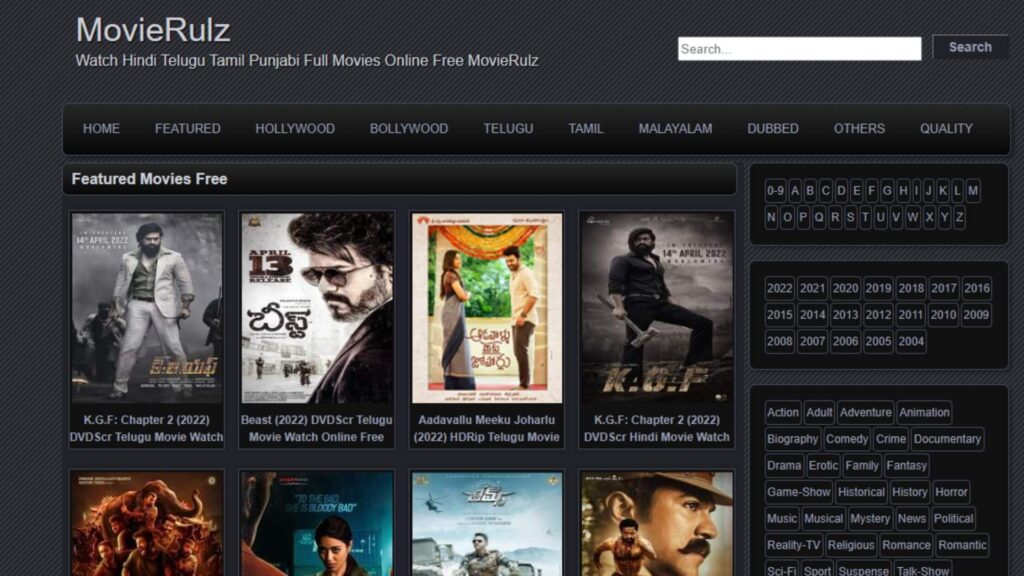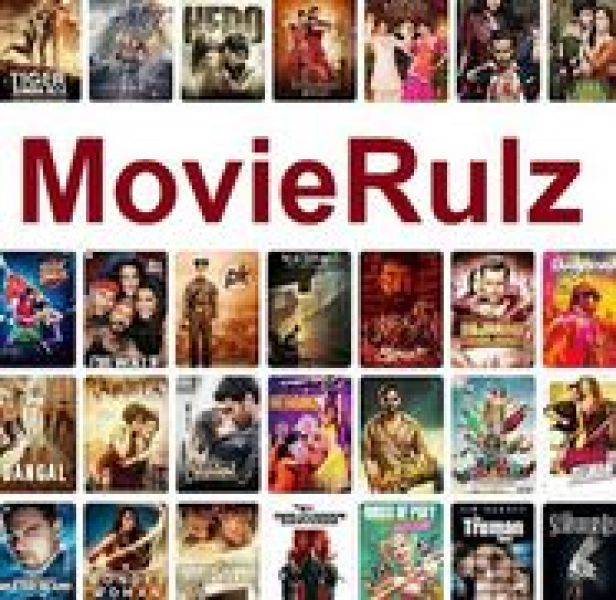In today's world of ever-evolving entertainment, the term "movie rulesz" has emerged as a powerful concept that shapes how films are made, marketed, and enjoyed. From the golden rules of storytelling to the technical guidelines that govern modern filmmaking, understanding movie rulesz is essential for anyone who loves cinema. These rules aren't just arbitrary regulations; they're the foundation upon which some of the most iconic films have been built. Whether you're a filmmaker, a movie enthusiast, or simply someone who enjoys a good flick, diving into the world of movie rulesz can provide invaluable insights into the art and science of filmmaking.
As we explore this fascinating topic, it's important to recognize that movie rulesz go beyond the traditional boundaries of what we might think of as "rules." They encompass everything from the narrative structures that guide storytelling to the technical aspects that ensure a film's success. These rules are not meant to stifle creativity but rather to enhance it, providing filmmakers with a framework to express their ideas in the most impactful way possible. By understanding these principles, audiences can gain a deeper appreciation for the films they love and even become better critics and creators themselves.
From the blockbusters that dominate the box office to the independent films that challenge conventions, movie rulesz play a crucial role in shaping the cinematic landscape. This article aims to demystify these rules, offering a comprehensive look at their origins, applications, and importance. Whether you're interested in learning about the rules that govern screenwriting, cinematography, or marketing, this guide will provide you with the knowledge you need to navigate the exciting world of film. Let's embark on this journey together and uncover the secrets behind the magic of movies.
Read also:Menards Bay City Hours Your Ultimate Guide To Shopping Made Easy
Table of Contents
- What Are Movie Rulesz?
- Why Are Movie Rulesz Important?
- How Do Movie Rulesz Impact Storytelling?
- Who Sets the Movie Rulesz?
- What Are the Technical Movie Rulesz?
- Can Movie Rulesz Be Broken?
- How Do Movie Rulesz Affect Marketing?
- Frequently Asked Questions
- Conclusion
What Are Movie Rulesz?
Movie rulesz refer to the set of guidelines, principles, and conventions that govern the creation, production, and distribution of films. These rules can be broadly categorized into narrative, technical, and marketing aspects. On the narrative side, movie rulesz often involve storytelling techniques such as the three-act structure, character arcs, and plot development. In terms of technical aspects, they include cinematography, sound design, and editing practices. Marketing rulesz focus on strategies for promoting films, targeting audiences, and maximizing box office success.
These rules are not rigid laws but rather flexible guidelines that help filmmakers craft compelling stories and deliver high-quality productions. For instance, the three-act structure, a common narrative rule, divides a film into setup, confrontation, and resolution, providing a framework for effective storytelling. Similarly, technical rules like the 180-degree rule ensure continuity in camera angles, enhancing the viewer's experience. By adhering to these rules, filmmakers can create films that resonate with audiences and achieve commercial success.
Why Do Movie Rulesz Exist?
The existence of movie rulesz stems from the need to standardize and streamline the filmmaking process. Over the years, filmmakers have discovered patterns and practices that work well, leading to the development of these rules. They serve as a foundation for creativity, ensuring that films are coherent, engaging, and technically sound. While some may argue that rules limit artistic freedom, they actually provide a structure within which creators can innovate and experiment. By understanding and applying movie rulesz, filmmakers can push the boundaries of their craft while maintaining audience engagement.
Why Are Movie Rulesz Important?
The importance of movie rulesz cannot be overstated. They play a critical role in ensuring that films are well-crafted, technically proficient, and commercially viable. Without these rules, the filmmaking process would lack direction, leading to inconsistent quality and audience disengagement. For example, imagine watching a film where the story jumps randomly between different timelines without any logical structure. Such a film would likely confuse viewers and fail to convey its intended message. By following movie rulesz, filmmakers can avoid such pitfalls and deliver a seamless cinematic experience.
Moreover, movie rulesz help filmmakers communicate effectively with their audience. They establish a common language and set of expectations that both creators and viewers can rely on. This shared understanding ensures that films are not only entertaining but also meaningful. Whether it's through the use of specific camera techniques or the adherence to narrative conventions, movie rulesz enable filmmakers to connect with their audience on a deeper level, creating experiences that resonate long after the credits roll.
How Do Movie Rulesz Benefit Filmmakers?
Filmmakers benefit from movie rulesz in numerous ways. Firstly, they provide a framework for creativity, allowing artists to focus on their vision without getting bogged down by technical or narrative issues. Secondly, they ensure consistency and professionalism in film production, which is crucial for gaining the trust of investors, distributors, and audiences alike. Lastly, they offer a competitive edge in the marketplace by helping films stand out and succeed commercially. By mastering movie rulesz, filmmakers can enhance their craft, increase their chances of success, and leave a lasting impact on the industry.
Read also:Why Sams Club Cakes Online Are The Ultimate Treat For Every Occasion
How Do Movie Rulesz Impact Storytelling?
Storytelling is at the heart of filmmaking, and movie rulesz have a profound impact on how stories are told. These rules shape everything from character development to plot progression, influencing the way narratives unfold on screen. For instance, the hero's journey, a popular narrative structure, provides a blueprint for character growth and transformation, ensuring that audiences can relate to and invest in the protagonist's journey. Similarly, rules around dialogue and pacing help maintain audience interest, preventing films from becoming monotonous or disjointed.
Movie rulesz also dictate how conflicts are introduced, developed, and resolved, adding depth and complexity to stories. By adhering to these rules, filmmakers can craft narratives that are not only engaging but also emotionally resonant. Furthermore, they enable filmmakers to explore diverse themes and perspectives, enriching the cinematic experience for audiences. Whether it's through the use of flashbacks, parallel storylines, or nonlinear narratives, movie rulesz empower storytellers to push the boundaries of their craft while maintaining clarity and coherence.
What Are Some Common Narrative Movie Rulesz?
Some common narrative movie rulesz include:
- The three-act structure: Dividing a story into setup, confrontation, and resolution.
- The hero's journey: A framework for character growth and transformation.
- Show, don't tell: Using visual storytelling to convey emotions and ideas.
- Rising action: Building tension and suspense throughout the story.
- Character arcs: Developing characters in a way that aligns with the story's themes.
Who Sets the Movie Rulesz?
The question of who sets movie rulesz is a complex one, as these rules are shaped by a combination of industry professionals, historical precedents, and audience expectations. Filmmakers, screenwriters, directors, and editors all contribute to the development of these rules through their work. Over time, successful films and practices become benchmarks for future productions, influencing the evolution of movie rulesz. Additionally, audience feedback and market trends play a significant role in shaping these guidelines, as filmmakers strive to meet the demands and preferences of their viewers.
While no single entity governs movie rulesz, the collective efforts of the film industry ensure that these guidelines remain relevant and effective. Professional organizations, film schools, and industry publications also contribute to the dissemination and refinement of these rules, providing filmmakers with the resources they need to succeed. By understanding the origins and influences behind movie rulesz, filmmakers can better appreciate their importance and apply them effectively in their work.
Do Movie Rulesz Vary Across Cultures?
Yes, movie rulesz can vary significantly across cultures, reflecting the unique storytelling traditions and preferences of different regions. For example, Hollywood films often prioritize fast-paced action and spectacle, while Asian cinema may focus more on nuanced character development and philosophical themes. These cultural differences influence the way stories are told, the techniques used, and the expectations audiences have. By recognizing and respecting these variations, filmmakers can create films that resonate with diverse audiences around the world.
What Are the Technical Movie Rulesz?
Technical movie rulesz encompass the practical aspects of filmmaking, including cinematography, sound design, and editing. These rules ensure that films are visually stunning, audibly immersive, and technically flawless. For instance, the 180-degree rule maintains continuity in camera angles, preventing audience confusion during scenes involving characters in conversation. Similarly, the rule of thirds guides camera framing, creating visually balanced and aesthetically pleasing shots. Sound design rules focus on clarity, balance, and emotional impact, ensuring that audio elements enhance the viewing experience.
Editing rules play a crucial role in pacing and narrative flow, dictating how scenes are cut and transitions are made. By adhering to these technical rulesz, filmmakers can create films that are not only visually and audibly impressive but also emotionally engaging. Whether it's through the use of specific camera movements, sound effects, or editing techniques, technical movie rulesz enable filmmakers to craft experiences that captivate and resonate with audiences.
Why Are Technical Movie Rulesz Essential?
Technical movie rulesz are essential because they ensure that films meet the highest standards of quality and professionalism. They provide filmmakers with the tools and knowledge needed to execute their creative vision effectively, while also meeting audience expectations. Without these rules, films might suffer from technical flaws that detract from the overall experience, such as poor sound quality, inconsistent lighting, or jarring edits. By mastering technical movie rulesz, filmmakers can deliver films that are both visually stunning and emotionally impactful, leaving a lasting impression on viewers.
Can Movie Rulesz Be Broken?
One of the most intriguing aspects of movie rulesz is the possibility of breaking them. While these rules provide a solid foundation for filmmaking, they are not set in stone. In fact, some of the most groundbreaking and innovative films have emerged from challenging or subverting traditional rules. For example, Quentin Tarantino's use of nonlinear narratives in "Pulp Fiction" defied conventional storytelling structures, yet it captivated audiences and redefined the possibilities of cinema. Similarly, directors like Wes Anderson and Guillermo del Toro have created distinct visual styles by bending the rules of cinematography and production design.
Breaking movie rulesz requires a deep understanding of their purpose and function, as well as the courage to take creative risks. When done effectively, it can lead to fresh perspectives and exciting new approaches to filmmaking. However, it's important to remember that breaking rules should serve a purpose, enhancing the story or message rather than simply being done for the sake of novelty. By balancing adherence to and deviation from movie rulesz, filmmakers can create works that are both innovative and impactful.
What Are Some Examples of Rule-Breaking Films?
Some notable examples of rule-breaking films include:
- Pulp Fiction (1994): Known for its nonlinear narrative structure.
- Memento (2000): Features a reverse chronological storyline.
- The Blair Witch Project (1999): Utilizes found-footage techniques to create an immersive horror experience.
- Inception (2010): Explores complex dreamscapes and multiple layers of reality.
How Do Movie Rulesz Affect Marketing?
Movie rulesz also play a significant role in film marketing, influencing how movies are promoted and distributed. Marketing rulesz focus on strategies for targeting audiences, creating buzz, and maximizing box office success. These rules include everything from trailer editing techniques to social media campaigns, ensuring that films reach the right audiences at the right time. For example, the "rule of three" in trailers dictates that teasers should reveal just enough to intrigue viewers without giving away the entire plot. Similarly, the use of key art and taglines helps establish a film's identity and appeal to its target demographic.
Marketing movie rulesz also involve understanding audience preferences and leveraging data-driven insights to refine promotional strategies. By adhering to these rules, studios can optimize their marketing efforts, increasing the likelihood of a film's success. Whether it's through traditional advertising methods or innovative digital campaigns, marketing movie rulesz enable filmmakers and studios to connect with audiences effectively, ensuring that their films are seen and appreciated by the widest possible audience.
Frequently Asked Questions
What Are the Most Important Movie Rulesz?
The most important movie rulesz depend on the specific aspect of filmmaking being considered. For storytelling, the three-act structure and character arcs are crucial. Technically, rules like the 180-degree rule and rule of thirds are essential. Marketing-wise, strategies like trailer editing and key art design play a vital role. Ultimately, the importance of each rule depends on its relevance to the film's goals and the audience's expectations.
Can Beginners Learn Movie Rulesz?
Absolutely! Beginners can learn movie rulesz by studying successful films, attending workshops, and practicing their craft. Online resources, film schools, and industry publications provide valuable insights into the principles and practices of filmmaking. By starting with the basics and gradually building their knowledge


